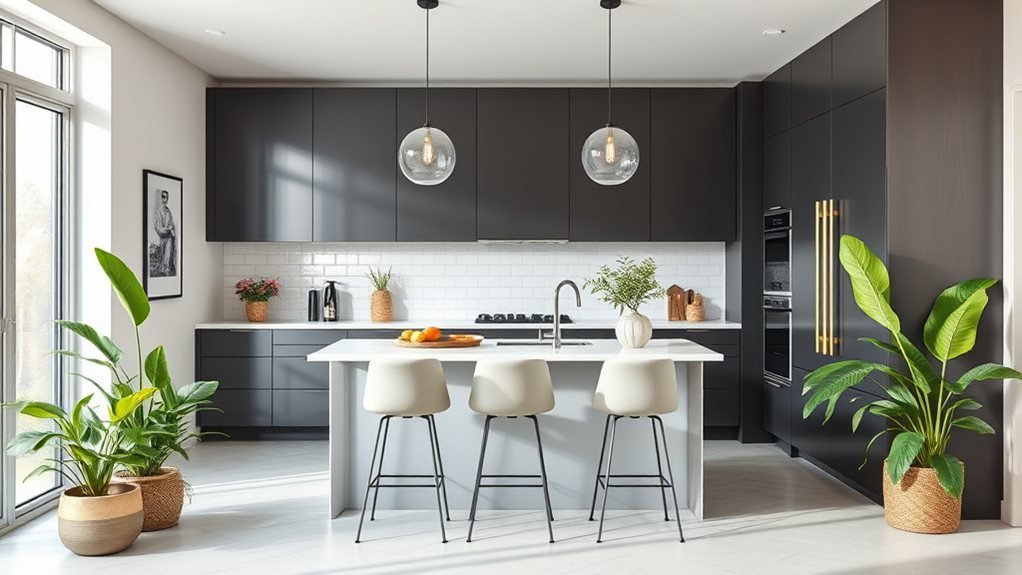10 Stunning Kitchen Ideas With Mixed Cabinets
Your kitchen can’t possibly express its full potential without mixing cabinets; it’s like trying to paint a masterpiece with just one color. By combining different styles, textures, and colors, you can create a space that not only serves its purpose but also showcases your personal taste. Think about the possibilities of vintage meets modern or the sophistication of two-tone designs. As you investigate various combinations, you might just uncover the perfect mix that improves both functionality and aesthetics in your kitchen. What intriguing ideas might spark your creativity?
Playful Color Combinations
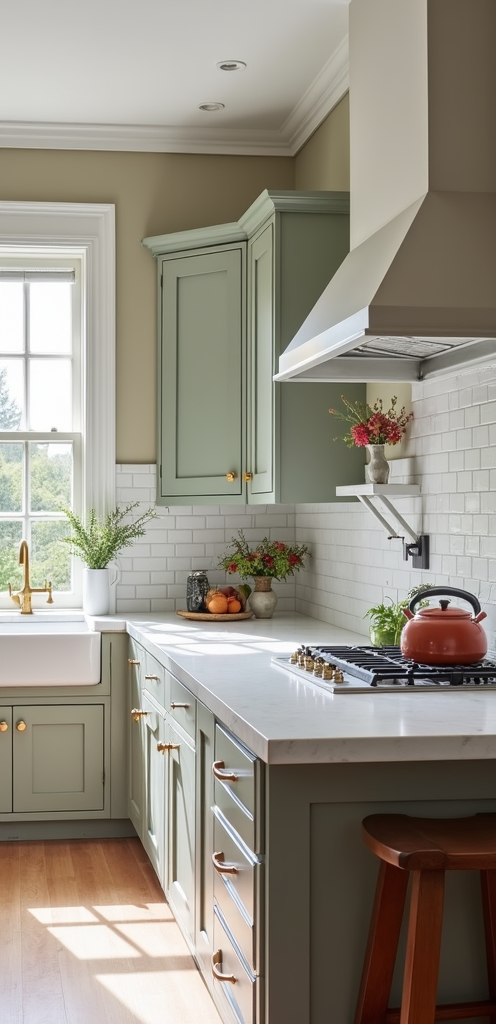
When designing your kitchen, playful color combinations can transform the space into a vibrant gathering place. Start by choosing two or three main colors. Consider a bold color for the lower cabinets, like a deep navy, paired with lighter shades like crisp white or soft mint for the upper cabinets. This mix draws the eye upward and creates an engaging visual flow.
Next, integrate accents through your hardware or decor items. Brushed gold handles can complement navy, while colorful dishware on open shelves can add a fun twist.
Remember to balance bright colors with neutral tones to avoid overwhelming the space. Finally, feel free to experiment—your kitchen should reflect your personality and make cooking a joyful experience.
Contrasting Textures
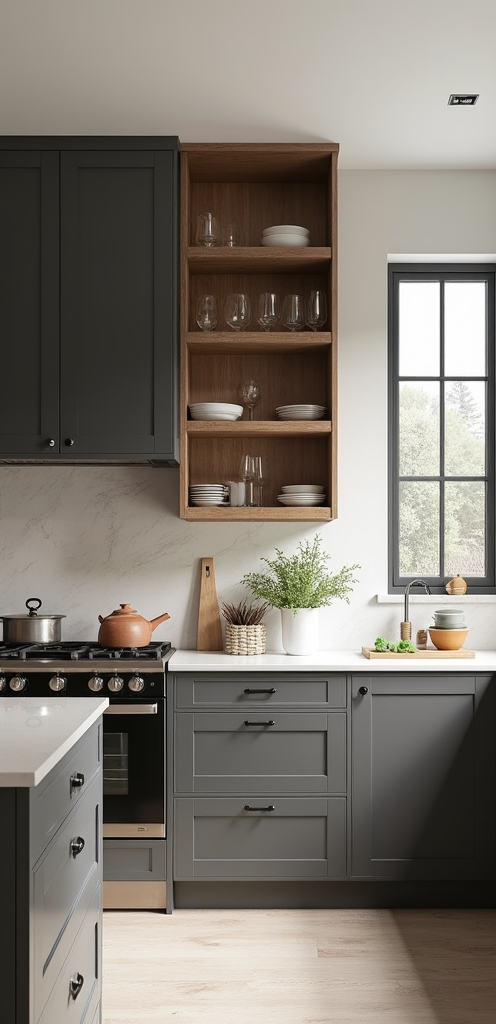
Mixing textures in your kitchen can elevate the visual appeal and create a dynamic atmosphere. Start by combining smooth cabinets with grainy surfaces. For example, pair sleek, high-gloss cabinets with rustic wooden shelves. This method adds depth and interest to your design.
You can also introduce contrasting materials like metal and glass. Consider stainless steel appliances alongside frosted glass cabinet doors for an eye-catching effect.
Don’t shy away from unexpected elements, like a textured backsplash, to further augment the contrast. Textured tiles in a colorful pattern can break up monotony.
Finally, be mindful of balance. Too many textures can overwhelm the space, so choose a few key elements to create a cohesive yet diverse aesthetic.
Vintage Meets Modern
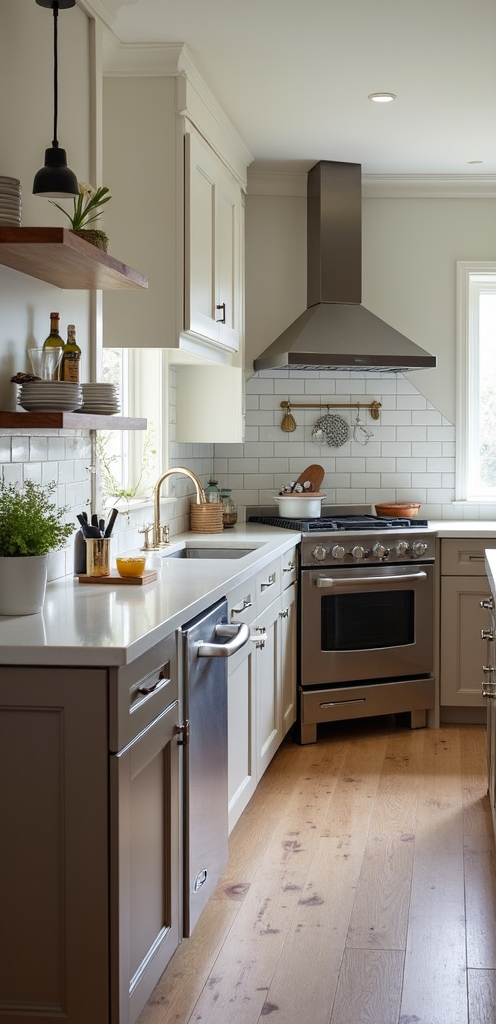
Blending vintage charm with modern style creates a unique kitchen that feels both timeless and fresh.
To achieve this look, start by mixing cabinet styles. Choose vintage cabinetry with intricate details, like beadboard or raised panels, and pair it with sleek, contemporary units. This contrast sets a balanced tone.
Next, play with color. Soft pastels or deep jewel tones can improve vintage pieces while keeping modern elements vibrant.
Don’t shy away from mixing materials, either. A wooden table from the past works beautifully alongside a metal island.
Finally, pay attention to hardware. Select modern pulls and knobs to complement vintage cabinets. This small detail reinforces the blend, ensuring your kitchen feels cohesive and purposeful.
Enjoy your new space that celebrates both eras!
Open Shelving Integration
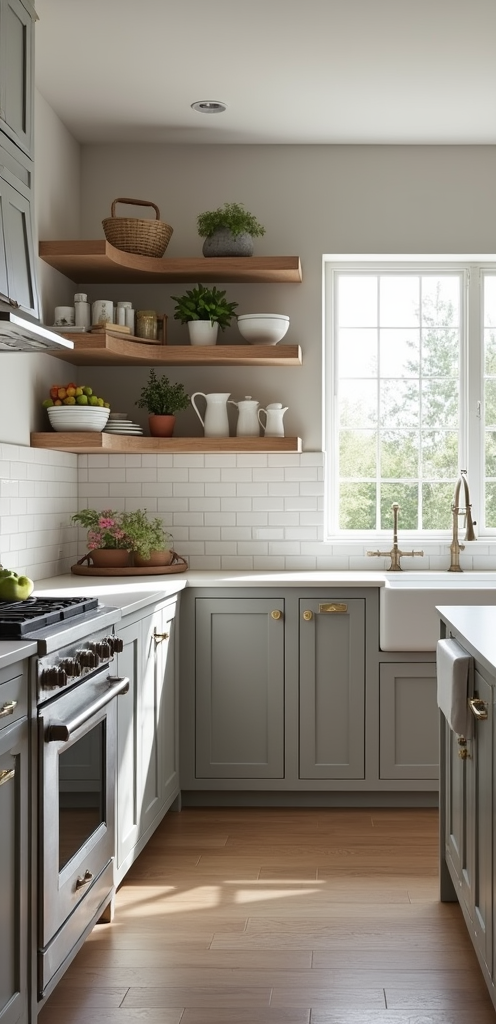
Integrating open shelving into your kitchen design can improve the overall aesthetic while providing functional storage. Open shelves allow you to display attractive dishes, cookbooks, or plants, transforming the look of your kitchen.
When planning, consider the materials and colors of your shelves. Select styles that complement your mixed cabinets. For instance, if your cabinets are dark wood, lighter shelves can create contrast.
Position your shelves at eye level for easy access. Confirm they’re sturdy enough to hold heavy items like dishes or jars.
To maintain organization, group similar items together; this not only looks tidy but helps you find what you need quickly. Remember, open shelving works best with a thoughtful arrangement to avoid visual clutter while adding personality to your space.
Two-Tone Cabinet Styles
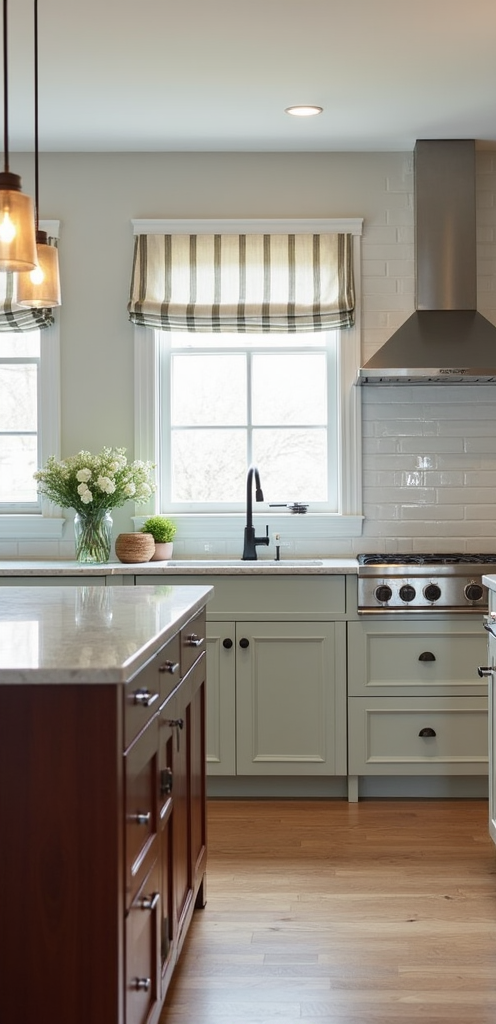
Using two-tone cabinet styles can improve your kitchen’s design while complementing the open shelving you’ve incorporated. This approach pairs different colors or finishes, bringing depth and interest to your space.
For instance, consider dark lower cabinets with light upper ones. This contrast can draw the eye upward, making the kitchen feel larger.
When choosing colors, think about the mood you want. Warm tones, like cream and taupe, create a cozy vibe, while cool tones, like blue and gray, offer a modern feel.
Additionally, you can mix materials. Pair wooden cabinets with a glossy finish for a stylish look.
Accent Islands
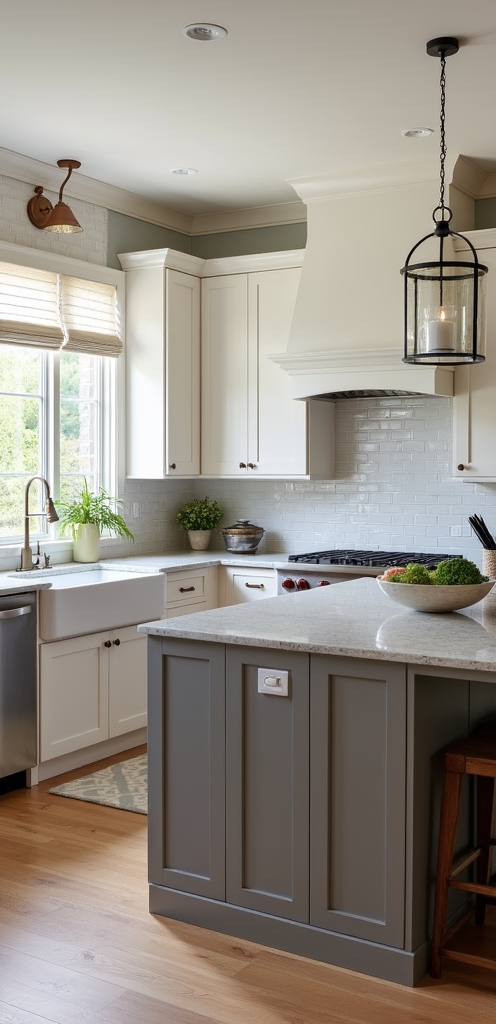
An accent island can serve as the focal point in your kitchen, adding both functionality and personality.
When choosing an accent island, consider its size and shape. A larger island can provide more workspace, while a smaller one may fit better in tighter spaces.
Mix materials for visual interest; for instance, pair a wooden island with sleek metal accents.
Color is key. You might opt for a bold hue that contrasts with your cabinets, drawing the eye and improving your design.
Don’t forget about storage. Incorporating shelves or cabinets into the island maximizes space.
Finally, add seating if room allows; this invites social interaction and elevates the island’s role as a gathering spot in your kitchen.
Utilizing Glass Front Cabinets
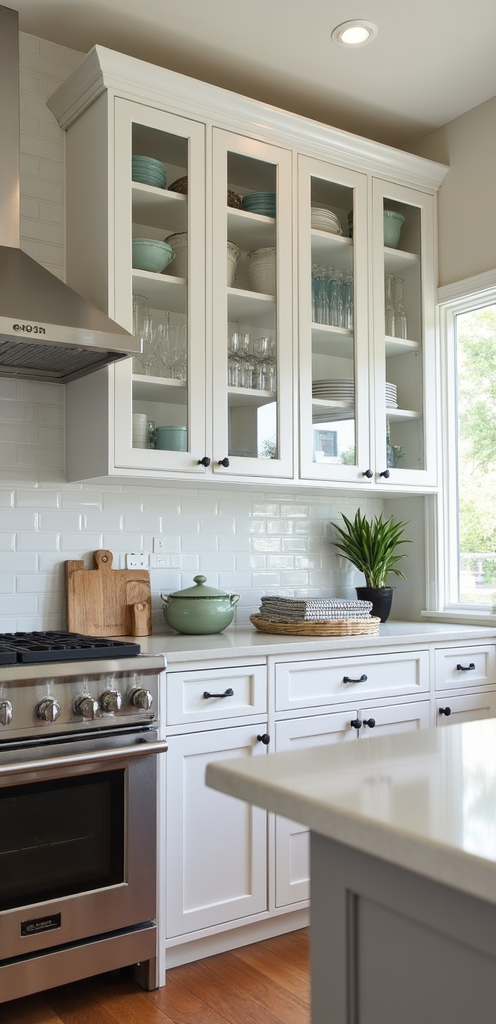
Accent islands can beautifully complement your kitchen’s design while introducing practical features, like mixed cabinetry styles.
Utilizing glass front cabinets is a smart way to add elegance and style. You can showcase your favorite dishware or decorative items, creating a personalized touch.
When you choose glass front cabinets, consider pairing them with solid wood or painted cabinets for contrast. This mix adds visual interest.
Keep the interior organized and decluttered; visible items should look appealing. You might want to incorporate LED lighting inside the cabinets to highlight your display.
Make certain the glass is easy to clean; this keeps your kitchen looking fresh. Overall, glass front cabinets improve your kitchen while providing functional storage.
Rustic and Industrial Fusion
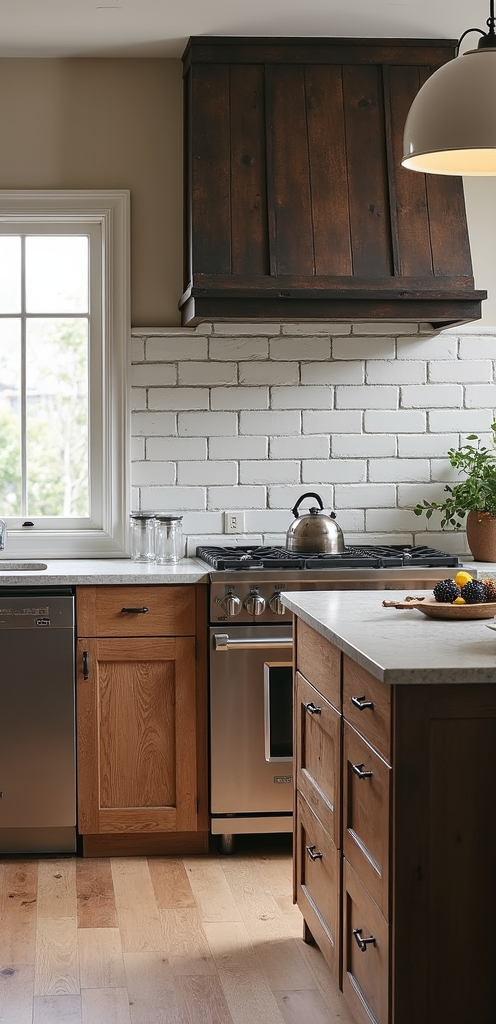
Blending rustic and industrial styles in your kitchen creates a warm yet edgy atmosphere that many homeowners crave.
To achieve this look, start with raw materials like exposed wood and metal accents. Consider using reclaimed wood for your cabinets, paired with metal handles for a strong contrast.
For countertops, opt for materials like concrete or a distressed wooden surface. These add character while balancing the sleekness of industrial design.
In terms of color, earthy tones work well with darker metals, grounding the space.
Don’t forget to include open shelving; it can showcase rustic dishware while maintaining an airy feel.
Together, these elements form a cohesive kitchen space that’s both inviting and stylish!
Monochromatic Palettes
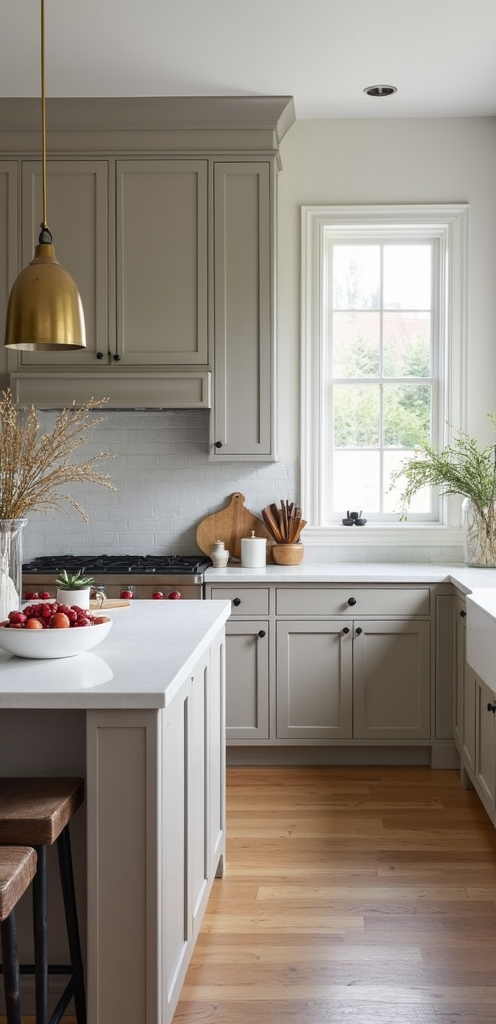
For a different take on kitchen design, consider a monochromatic palette that creates a clean and sophisticated look. This approach uses different shades of one color, making your kitchen feel cohesive.
Start with your cabinets. For instance, choose deep navy blue for the lower cabinets and a lighter shade for the upper ones. You can also incorporate white or gray for countertops and backsplashes, adding depth to the color scheme.
Enhance the look with matching hardware and accessories in the same color family. This can include pulls, knobs, and even kitchen tools.
Using a monochromatic palette isn’t just visually appealing; it also simplifies your design choices, making the space appear larger and more organized.
Strategic Layouts and Design
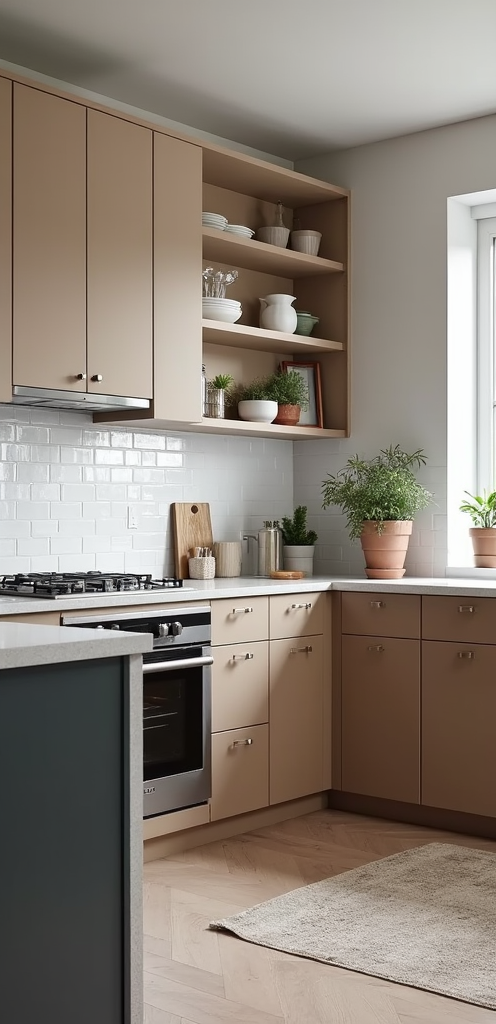
When designing your kitchen with mixed cabinets, strategic layouts can make a significant difference in both functionality and aesthetics.
Start by evaluating your space. An open layout works well with contrasting cabinet styles, allowing for a flow between kitchen zones. Use U-shaped or L-shaped designs to improve storage and accessibility.
Consider the “work triangle” concept: the sink, stove, and fridge should be placed close together for efficient movement.
When mixing cabinet styles, guarantee complementary colors and finishes to create a cohesive look. Position taller cabinets for storage against walls and incorporate lower cabinets for easy access to utensils and cookware.
Lastly, guarantee good lighting over workspaces.
These steps will help you achieve a well-organized and visually appealing kitchen.




